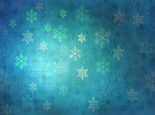Deck the Halls
Fertility rites
Mistletoe is by far the most curious of our festive fellows. This parasite of fruit trees and oaks has no roots, instead relying on its host for both food and water. The fleshy, antler-like leaves and crystal-white berries were revered by the Druids who saw it as a powerful symbol of fertility, offering peace, luck and protection against disease. The plant was cut from trees on the solstice but was never allowed to touch the ground for fear it might lose its magical properties. Of course, what we all want to know is where did the kissing association sprout from? The ancient translation for mistletoe is literally ‘give me a kiss’, and it was the Tudors and Stewarts who developed its romantic edge by tying up sprigs into ‘kissing bunches’. This most pagan plant, with all its association of romance and fertility, means that even today it is unusual to see mistletoe within the sacred bounds of a church.
Poinsettia is by far the newest kid on the Christmas block. It wasn’t until the 20th century that these warming, red-bracted plants were grown commercially in Europe, and it was only in the second half of the century that breeding to produce varieties able to survive the dry, hostile climate of our centrally-heated homes saw their popularity really take off.
Now a multi-million pound industry, this glamorous show-off had a humble start. Poinsettias are native to Mexico, where it is tradition to bring flowers to the altar to give as a gift to the infant Jesus. Legend has it that there was a young lad who could not afford to buy any flowers to offer up; even his search for beautiful wildflowers would never bear fruit given the cold of winter. Then one year his luck changed when, dropping behind the other church-goers and sobbing at his failure to find any suitable flowers, an angel took pity on him. The angel told him to pick any weeds he could find and place them on the altar. He did just that, creeping to the altar with a degree of shyness and embarrassment. Then, as they reached the altar, the sorry-looking weeds broke out into the most glorious winter blooms – the poinsettia.
Taking them down
Of course, all good things must come to an end and, eventually, all that festive greenery will need to be taken down. Precisely when is open to interpretation. Some say every scrap of Christmas greenery should be removed by the Epiphany on 6 January, though in times gone by pieces were often left up to shrivel away to fuel the fire for pancakes consumed on Shrove Tuesday. Smallholders would also feed Christmas greens to their cattle, though what they thought of this tough and tired offering is not documented.
So as you deck your halls with boughs of holly and hang the mistletoe up in heady expectation, cast your mind back to the customs and traditions that have led you to do so. There might not be as many witches lurking about nowadays, but maybe you should keep some holly and ivy by the door… just in case.
















